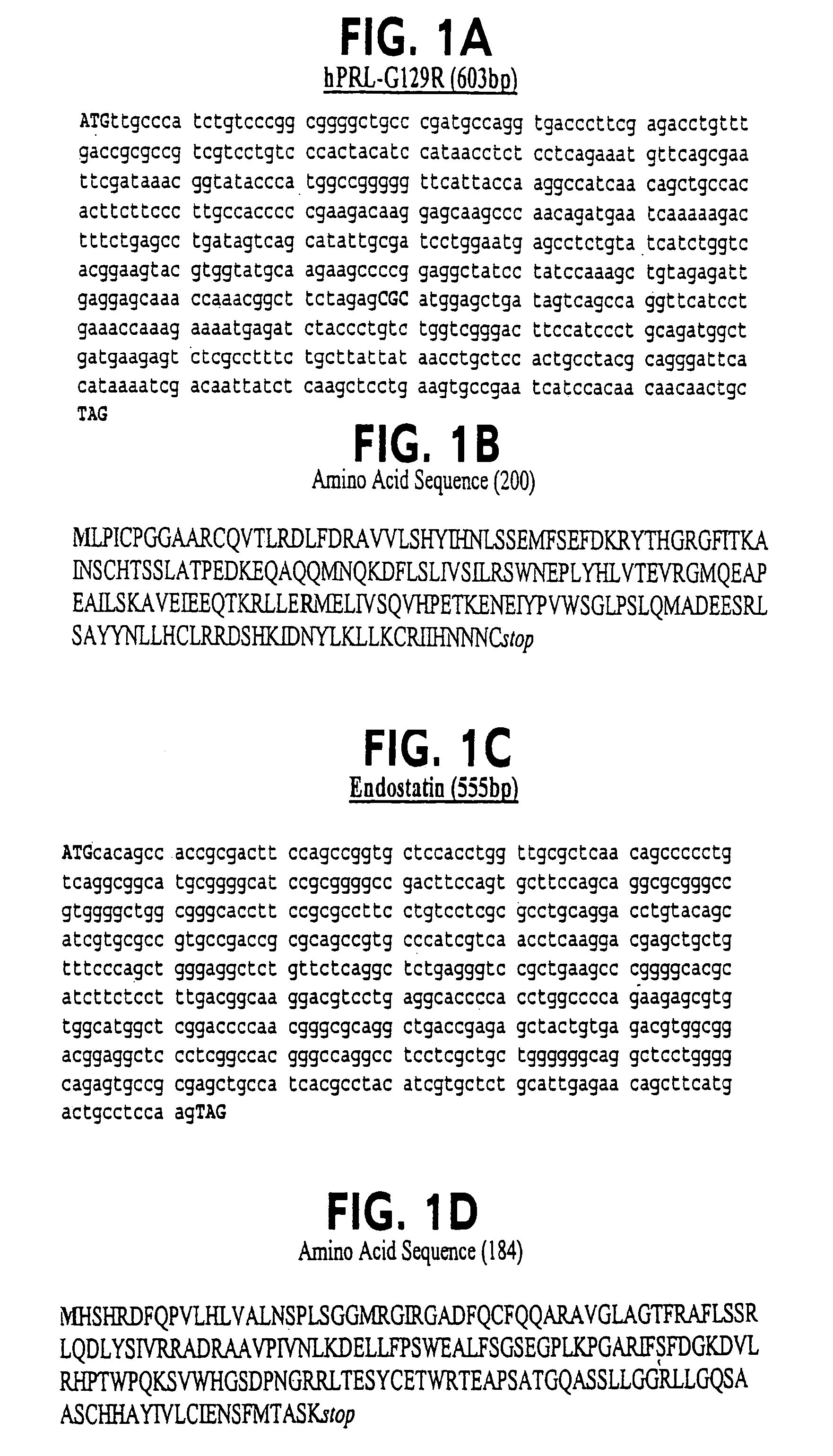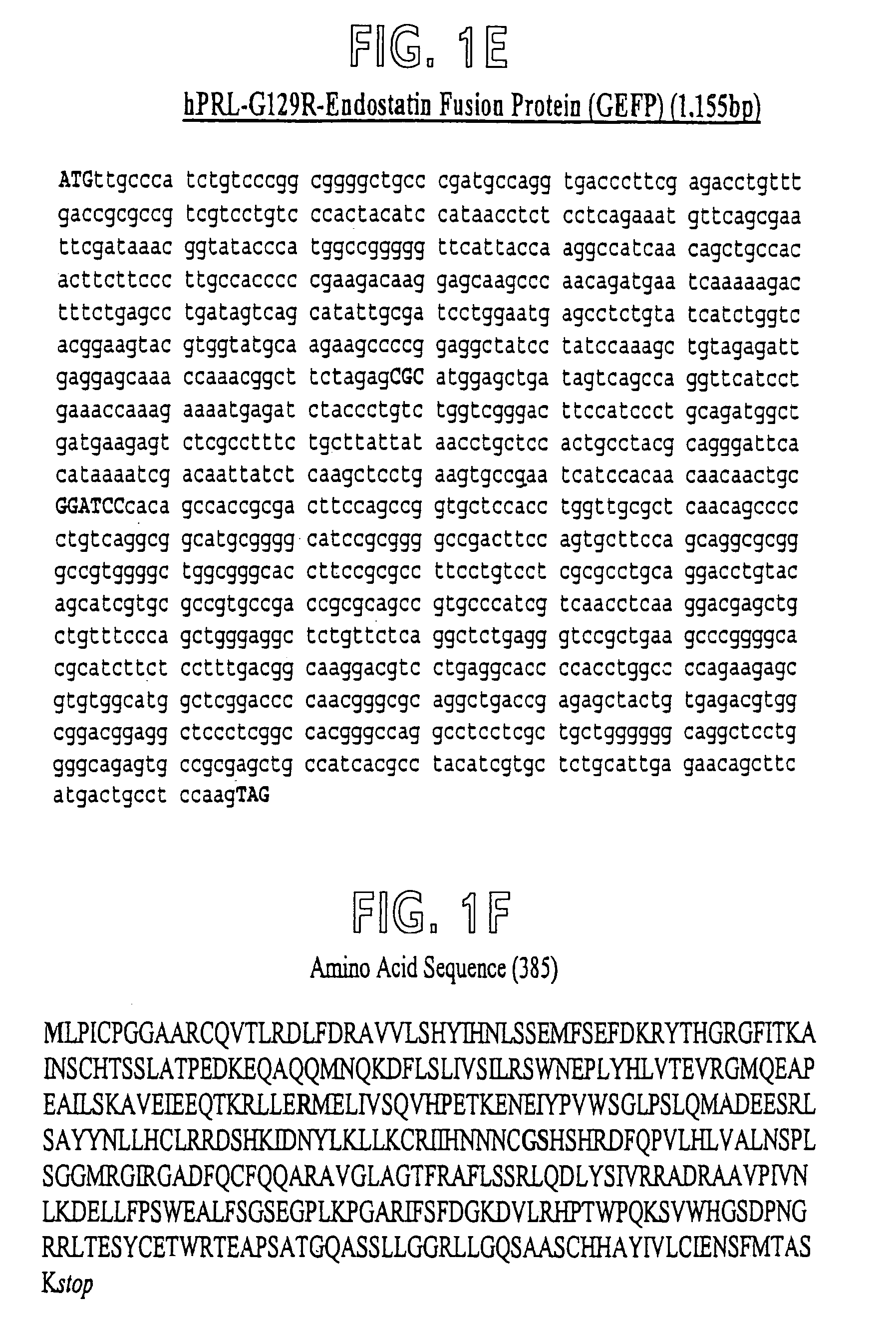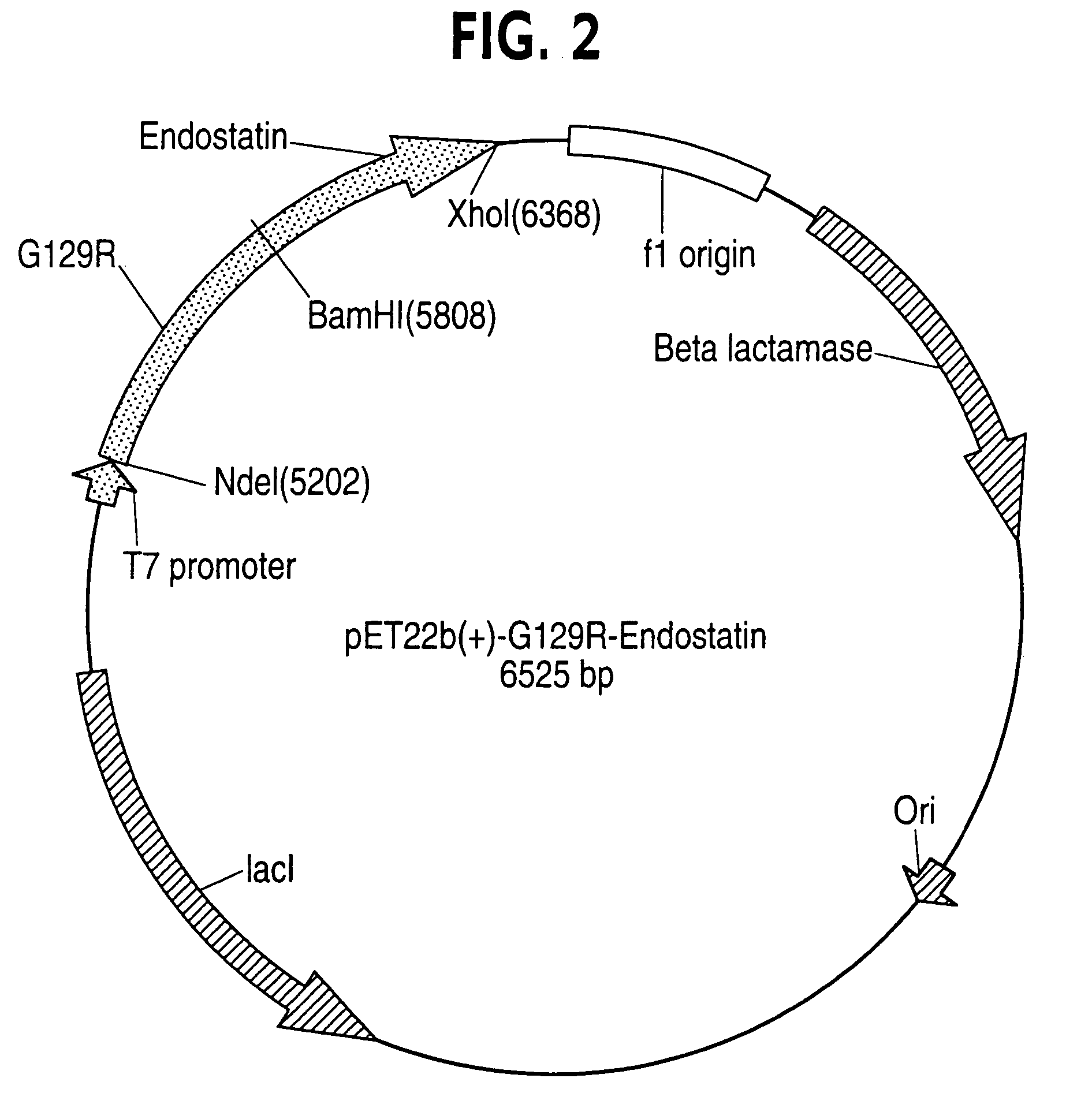Human prolactin antagonist-angiogenesis inhibitor fusion proteins
a technology of angiogenesis inhibitors and prolactin, which is applied in the direction of peptides, angiogenin, drug compositions, etc., can solve the problem that no suitable medicaments have been available for this purpos
- Summary
- Abstract
- Description
- Claims
- Application Information
AI Technical Summary
Benefits of technology
Problems solved by technology
Method used
Image
Examples
example 1
Cloning and Construction of Expression Vectors for hPRL-angiogenesis Inhibitor Expression
[0094]A two-step cloning procedure based upon published protocols (Catado et al., 2000) was used to generate recombinant DNA encoding hPRL-G129R fused to endostatin, angiostatin or Flk-1-BP, making a G129R-endostatin (G129R-endo), G129R-angiostatin, and G129R-Flk-1-bp fusion protein, respectively. Human endostatin, angiostatin, or Flk-1-bp were PCR amplified from Universal Quick-Clone cDNA (Clontech, CA). Each of the amplified cDNA fragments were first be cloned independently into a pCR2.1 TA cloning vector (Invitrogen, Inc.; Carlsbad, Calif.) and their sequences were confirmed.
[0095]For instance, Primers corresponding to G129R (5′ primer; restriction site for NdeI: 5′-CAT ATG TTG CCC ATC TGT CCC GGC-3′ (SEQ ID NO: 41) and 3′ primer; restriction site for BamHI: 5′-GGA TCC GCA GTT GTT GTT GTG GAT-3′ (SEQ ID NO: 42)) were used to amplify the G129R fragment from a previous clone (Chen et al., Clin....
example 2
Transfecting an Expression Plasmid Into a Stable Cell Line
[0097]E. coli, such as BL21(DE3) cells (Novagen, Madison, Wis.), were transformed with plasmids encoding G129R fusion proteins using the calcium chloride method. Bacteria were allowed to grow overnight in Luria-Bertani (LB) broth (ampicillin 50 μg / ml) at 37 C. The following day a LB growth culture was generated by inoculation of 5% of the seed culture and grown for ≈2.5 hours at 37° C. with agitation.
example 3
Purifying the Fusion Protein
[0098]Cells were transformed and grown as described in Example 2. IPTG (Fisher Scientific) was added to the culture (1 mM final concentration) to induce expression of G129R fusion proteins and incubated for an additional 4 hours. Bacteria were pelleted and resuspended in a solution containing 0.2M NaPO4 pH 8, 10 mM EDTA, and 0.5% Triton X-100. The resuspended bacteria were lysed with a 550 Sonic Dismembrator (Fisher Scientific). The products, which were present in the form of inclusion bodies, were pelleted at 12,000 g for 15 minutes and resuspended in 0.2M NaPO4 pH7, 1% v / v beta mercaptoethanol, and 8M Urea for refolding. The refolding process consists of dialyzing the protein against decreasing amounts of urea and beta-mercaptoethanol in the presence of 50 mM NH4HCO3 pH 8.0 for three consecutive days. The sample was first filtered through a 0.22 micron filter (VWR), degassed and then purified by Sepharose ionic exchange columns followed by Sephacryl gel...
PUM
| Property | Measurement | Unit |
|---|---|---|
| concentration | aaaaa | aaaaa |
| concentration | aaaaa | aaaaa |
| pH | aaaaa | aaaaa |
Abstract
Description
Claims
Application Information
 Login to View More
Login to View More - R&D
- Intellectual Property
- Life Sciences
- Materials
- Tech Scout
- Unparalleled Data Quality
- Higher Quality Content
- 60% Fewer Hallucinations
Browse by: Latest US Patents, China's latest patents, Technical Efficacy Thesaurus, Application Domain, Technology Topic, Popular Technical Reports.
© 2025 PatSnap. All rights reserved.Legal|Privacy policy|Modern Slavery Act Transparency Statement|Sitemap|About US| Contact US: help@patsnap.com



